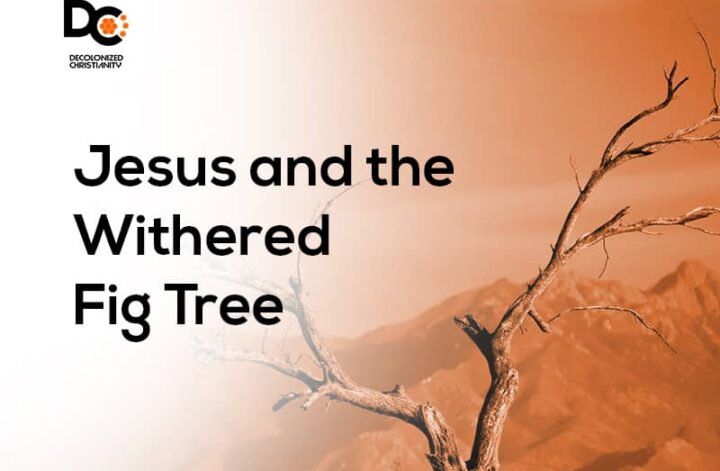Introduction
We modern readers tend to read the gospel books as pure history. But the authors typically explicitly tell their immediate readers the goal for writing, and this goal often is not about writing a history of Jesus and his deeds. Except for Luke, which claims to provide an “orderly account” (Luke 1:3) of the life and acts of Jesus, no other gospel book comes close to laying claim to being primarily an exercise in history-writing. John says that Jesus did other things which he did not include in his gospel account for reasons he did not tell us, but then adds that the portions he included were chosen so that his First-Century readers may “believe that Jesus is the messiah” (John 20:30-31). Thus, it would seem like John was more interested in doing apologetics than merely retelling the deeds of Jesus. Precisely because these authors were often not merely interested in history-writing, they often took the liberty to transpose units of stories as they saw fit for their literary goals. For instance, an attentive reader would be quick to recognize some minor variations in the withered fig tree story as told by Matthew and Mark (John and Luke do not mention the story). I should add, this literary practice was not unique to the Gospel writers. This was a common and acceptable practice of the time.
Mark and Sandwiches
The scholarly consensus today is that Mark was the earliest of the Gospels, though there are scholars who disagree. The author frequently uses intercalations, a literary technique, structurally like a sandwich, involving the insertion of a complete episode or story unit into another story, splitting the major story into two. In the Gospel of Mark, each story in this Markan sandwich often mutually interprets, or offers veiled commentary, on the other. Mark 5:21-42 is a well-known example. In this passage, an influential synagogue leader’s daughter was dying. The father, Jairus, went to Jesus for help. Jesus agreed to help and was heading to Jairus’ house. Mark paused the telling of this story by inserting the story of a woman who has been subject to bleeding for twelve years. Once done with this middle story, he then continues with the story of Jairus’ daughter. The literary effect of this intercalation is that it allows for the contrasting of certain details in the stories. Scott Brown comments on the parallels between these stories:
The recipients of these miracles are both female and called “daughter” (5:23,34), though the little girl with a rich family contrasts with the lone woman who spent all that she had on doctors; both females, moreover, have become permanent sources of defilement. Further, the number twelve is prominent in both stories (5:25, 42), as are the themes of faith (5:34, 36) and “being saved” (5:23, 28).
This Markan sandwich can, for instance, lead a reader to the conclusion that Jesus is no respecter of wealth in his healing ministry. In fact, Jesus put the miracle of the rich man on hold while he addressed the need of the lone woman who did not even have a man to represent her as would be customary in those days, an observation that is undoubtedly a result of her prolonged ailment.
Another instance where Mark uses this literary technique is in 3:20-34. In this passage, Jesus was being hosted in a house, but there were so many people in there that he could not eat. When his family got hold of the news, they got concerned and wanted to address the issue. At this point in the story, Mark inserts a story of some religious leaders accusing Jesus of being possessed by Beelzebub in response to which Jesus summoned the people and taught them the famous sermon on how a divided house or kingdom cannot endure to show the nonsensical nature of the allegation. Then, Mark returns to the earlier story where Jesus’ family was waiting outside for him. When Jesus was told about his family waiting outside, “he looked at those seated in a circle around him and said, “here are my mother and my brothers! Whoever does God’s will is my brother and sister and mother” (3:34-35). This way, Mark contrasts natural human family to spiritual family.
Sometimes the literary purpose of an intercalation may not be obvious. For instance, in 6:7-30, Mark depicts Jesus as sending out his apostles in units of two and giving them power over evil spirits. The disciples went out with much success. Here, Mark inserts the detailed story of John the Baptizer’s gruesome murder by the hands of Herod, a story that occupies most of the referenced verses. After this, he then wraps up the sandwich this way, “The apostles gathered around Jesus and reported to him all they had done and taught” (6:30). Mark probably used this intercalation to serve a double purpose: first, to tell the story of how Herod murdered John and, second, to portray the end of John’s forerunning ministry and how Jesus’ ministry replaced it. In one famous case of a Markan sandwich in Mark 11, however, the relationship between the stories is not apparent at a literal level, and some scholars believe, as Esther Miquel puts it, that, “if they are related, their relationship cannot be but symbolic or metaphoric” (145).
Mark 11 is a popular chapter. It is especially popular among Christians who teach faith healing. The chapter contains the stories of Jesus’ triumphal entry into Jerusalem, cursing of a fig tree, aggressive act in the temple, teaching on prayer, and authority being questioned. This chapter also features a Markan sandwich. Scott Brown even argues that this entire chapter and the first twelve verses of the next chapter take part in a “triple intercalation” (82). That this chapter features intercalations is generally not debated. What scholars hotly contest is just what Mark intended to communicate with his arrangement of the stories. Many Markan scholars maintain that the fig tree episode is a veiled commentary on the temple while some others are skeptical.
Works Cited
Brown, Scott G. “Mark 11:1-12:12: A Triple Intercalation?” The Catholic Biblical Quarterly, vol. 64, no. 1, 2002, pp. 78–89. JSTOR, www.jstor.org/stable/43727322. Accessed 14 Nov. 2020.
Kirk, J. R. Daniel. “Time for Figs, Temple Destruction, and Houses of Prayer in Mark 11:12-25.” The Catholic Biblical Quarterly, vol. 74, no. 3, 2012, pp. 509–527., www.jstor.org/stable/43727987. Accessed 14 Nov. 2020.
Miquel, Esther. “The Impatient Jesus and the Fig Tree: Marcan Disguised Discourse against the Temple.” Biblical Theology Bulletin, vol. 45, no. 3, 2015, pp. 144-154., www.academia.edu/14638383. Accessed 14 Nov. 2020.



